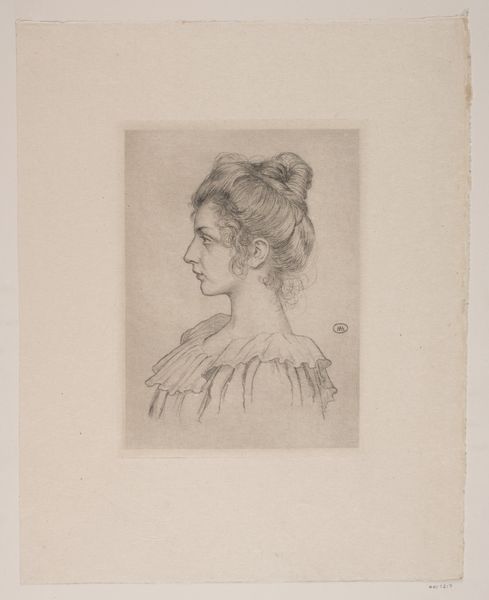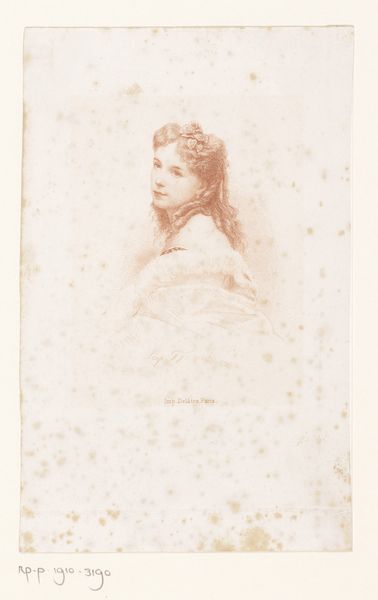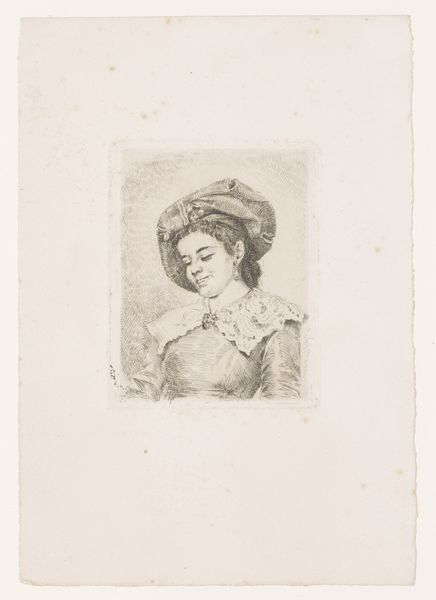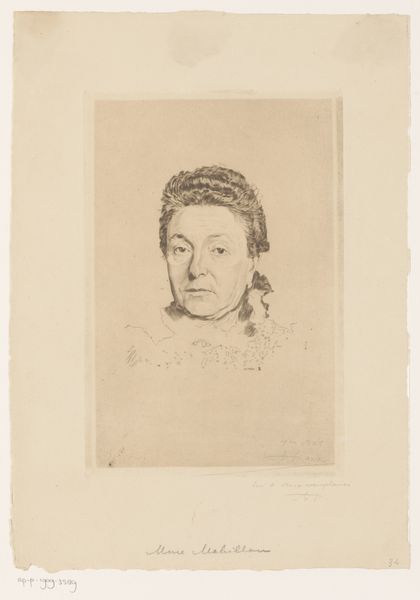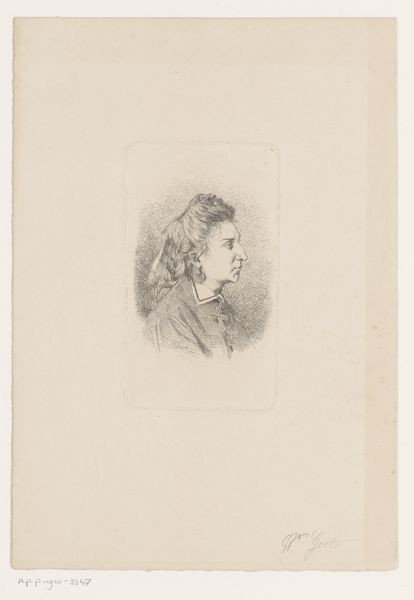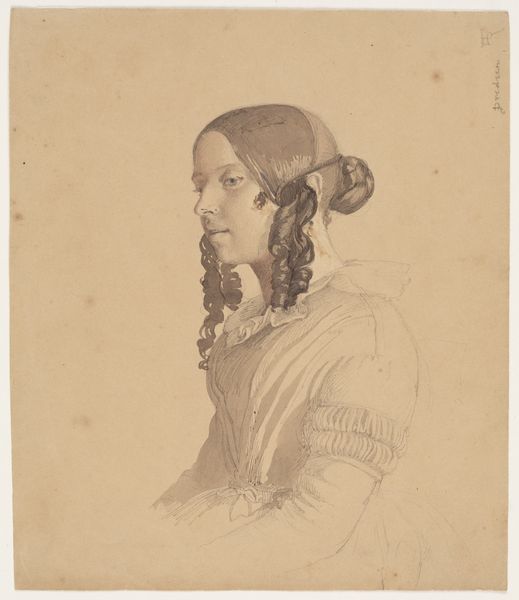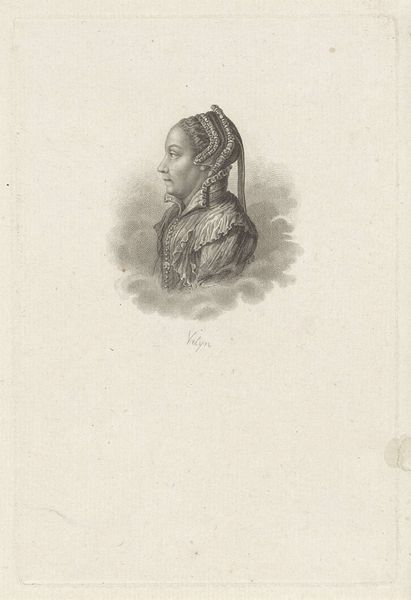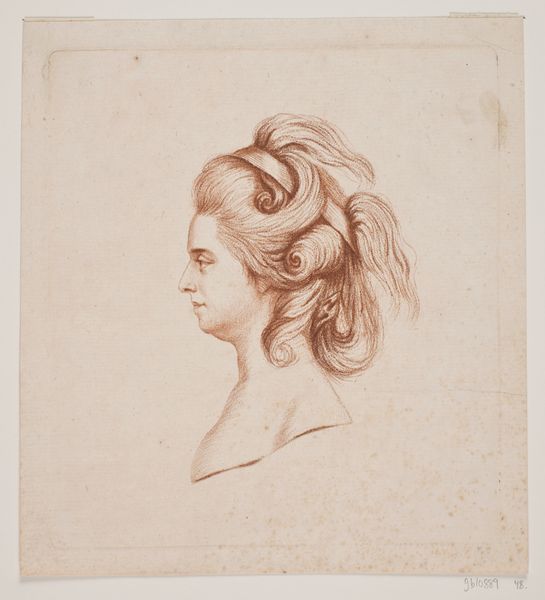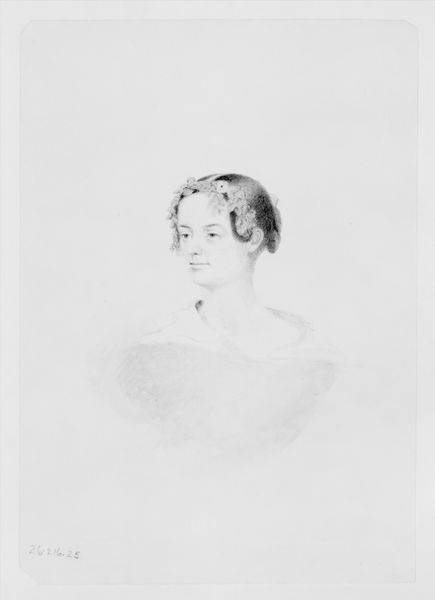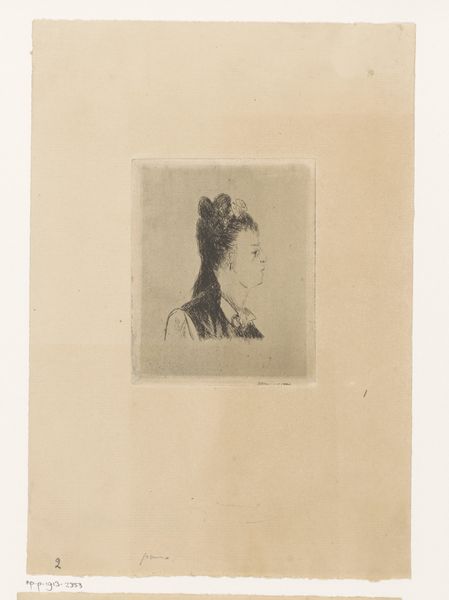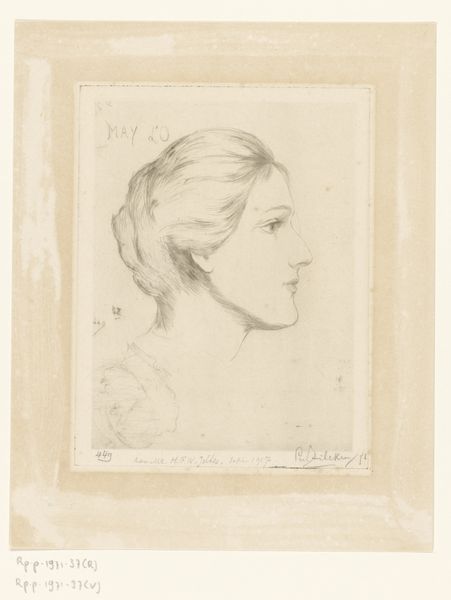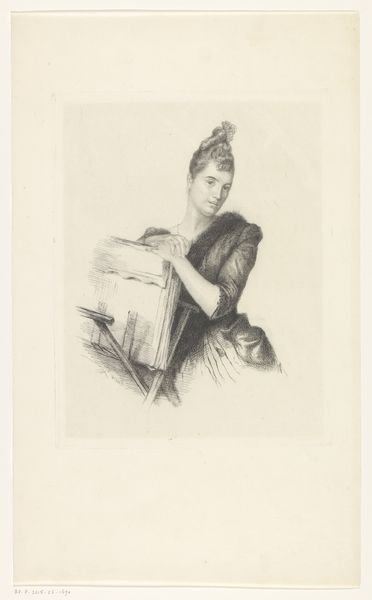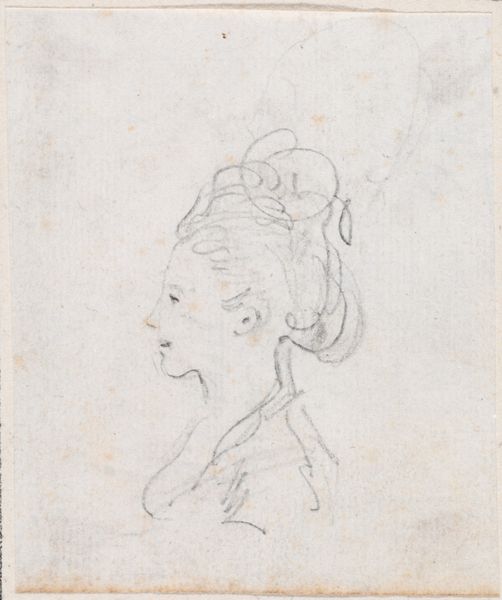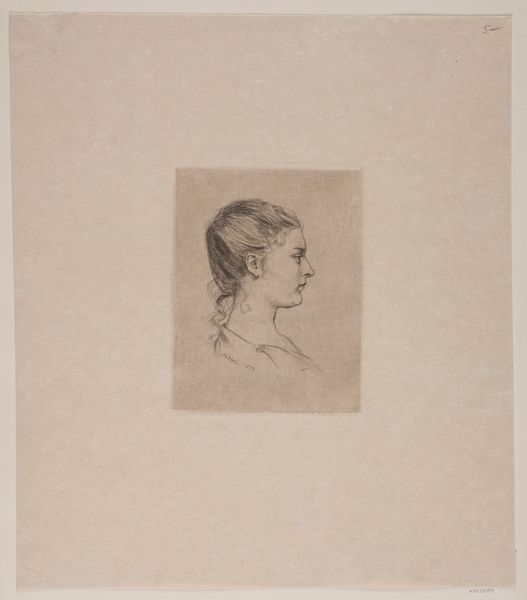
print, etching
#
portrait
# print
#
etching
#
portrait drawing
#
realism
Dimensions: 127 mm (height) x 94 mm (width) (plademaal)
Editor: This is "Agnes Gjørling," a portrait etching made between 1870 and 1880 by C.C. Andersen. It's a very delicate piece, quite small I imagine. What do you see in this work? Curator: Well, immediately I’m drawn to think about the socio-political context of portraiture at this time. The subject, a woman named Agnes, is presented in a way that certainly speaks to a particular class and ideal of feminine virtue. It's rendered with such fine lines, a soft focus, perhaps to suggest not just physical likeness, but a sense of inner grace. Don't you think? Editor: I do. The delicacy seems intentional, an effort to portray the sitter with great care. Do you see the simplicity as a statement too? Curator: Absolutely. While some might view the Realist style as objective, it's essential to examine what 'real' meant during this era, particularly for women. The artist has made certain choices, right? The absence of overtly opulent details could be read as a quiet assertion of a different kind of beauty, one not defined by excessive wealth but defined by intelligence and integrity. Who had access to the arts? Who had the right to participate? Who held these "ideals" that may have systematically excluded so many from having agency over their lives and narratives? Editor: That makes me see it very differently, now! So, you are pointing out that while the piece is technically skilled and, perhaps, beautiful, we need to consider its place within broader questions about identity and social norms? Curator: Exactly. It prompts us to question the power dynamics inherent in portraiture itself and in nineteenth-century Denmark, even within what might seem a straightforward, unassuming image. It's a starting point for larger dialogues. Editor: I’ve learned so much, I am excited to look at this more critically from now on. Curator: Likewise! It’s always rewarding to connect art historical details with present-day interrogations.
Comments
No comments
Be the first to comment and join the conversation on the ultimate creative platform.
